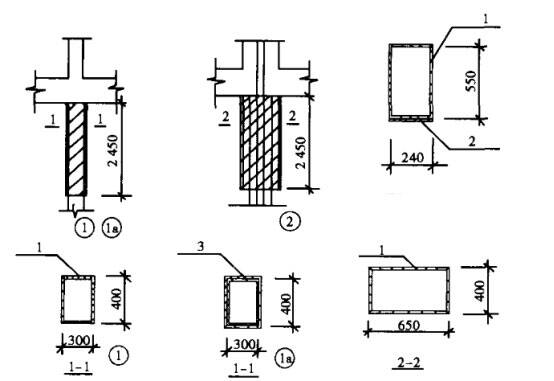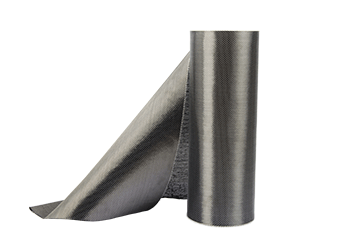Solutions
Horse Construction offers full range of structural strengthening materials with technical supports, documentation supports, products supports, project supports.
carbon fiber sheet strengthening
Advantages of fiber reinforcement technology
The commonly used reinforcement methods for reinforced concrete structures mainly include enlarged section reinforcement, bonded steel reinforcement, and outer steel reinforcement. The use of the above method has disadvantages such as a long construction period, which may affect the normal use of the structure and inconvenience in construction. Especially when the sticking steel reinforcement method or the enlarged section method is used in the corrosive (acid) medium, the outsourcing material is easily corroded and requires frequent maintenance, and the reinforcement effect is not ideal. The carbon fiber cloth has good corrosion resistance and durability, and can resist the corrosion of various acids, alkalis, and salts often encountered in buildings. After using this kind of reinforcement repair method to process the structure, not only does it not need the regular anti-rust maintenance as required by the steel structure method, but it can also protect the internal concrete structure and achieve the purpose of double reinforcement repair.
The status quo of a frame factory building before reinforcement
The reinforced concrete frame plant of the chloramphenicol workshop of a pharmaceutical factory was built in 1992 with a structure of two floors and three spans. The bottom floor is the packaging place for semi-finished products, and the second floor is the platform for processing and production. The main steel beam (channel steel) of the platform is placed on the frame beam. During the formal production period, the factory wraps each reinforced concrete pillar with FRP. There are 2 t (including raw materials) reactors installed on both sides of each compartment on the 2nd floor, and certain spare raw materials must be placed on the platform during the production process. Therefore, the load on the platform is relatively large, and during the normal operation of the reactor, due to the eccentric rotation of the agitator in the reactor, the vibration of the entire platform is very obvious. Since one of the raw materials produced is concentrated hydrochloric acid, the humidity in the entire workshop is very high and has a strong pungent odor. The supersaturated gas condenses into yellow liquid and gathers on the surface of the structure, making yellow spots on the surface of the structure visible everywhere. The production conditions are relatively poor. Under such conditions, the structural corrosion is quite serious. The steel bars and concrete of most of the columns are corroded to varying degrees, so that the original glass fiber reinforced plastics of the columns have been corroded and fractured, and the distribution of cracks is along the longitudinal direction. The corner protection layer concrete cracked and bulged out and even peeled off. The iron parts embedded in the pillars during the installation of the pipes corroded quite seriously, which accelerated the corrosion and cracking of the concrete. The section is weakened by nearly 1/4. Opening the protective layer of the concrete found that the corrosion of the steel bars was also quite serious, with 1/2 of the cross-section of some steel bars being corroded, and the maximum crack width was about 8 mm. The structure was reinforced a few years ago, only the peeling concrete was knocked down and the concrete was poured again, but a few years later cracks appeared in the protective layer of the columns. The main beams of the frame structure have hardly been corroded, but the connecting beams are corroded quite seriously. The cracks are all along the length of the stressed steel bars, and the deflection of some connecting beams is very obvious. The cracking of the concrete protective layer at the bottom of the beam is also quite serious, with the maximum crack width reaching about 4 mm. The load on the connecting beam is relatively small, mainly the load of some pipes. But the safety of the entire structure has not been guaranteed.


The principle of reinforcement is to strengthen the columns first and then the beams. Before reinforcement, the load around the reinforced components should be unloaded to ensure safety during reinforcement and reduce the secondary stress of the post-poured concrete and the bonded carbon fiber to give full play to the strength of the carbon fiber. Then use logs to tightly support the frame beams and connecting beams around the reinforced columns, and the lower ends of the logs are tightened with two opposite wooden deeds. Chisel away the cracked concrete to the concrete that is not corroded. Be careful not to vibrate the beam and log supports connected to the column. Cut the severely corroded steel bars and replant them from the foundation. Use a steel brush to clean the corroded rust spots on the steel bars that are not severely corroded. The actual bearing capacity is calculated according to the actual steel area and reinforced with carbon fiber. Support the formwork and re-cast the concrete. Add a small amount of expansion agent and water reducing agent to the newly poured concrete to reduce the shrinkage of the concrete so that the newly poured concrete can be tightly connected to the bottom of the beam. When the strength of the concrete reaches more than 75% of the design value, the surrounding logs can be removed, and then the connecting beams around the column can be treated. If the corrosion of the connecting beam is particularly serious, the method of cutting the steel bar and replanting the steel bar from the column is adopted for re-pouring. If the connecting beams on both sides of the column need to be re-poured, one beam should be poured first until the strength of the concrete reaches 75% of the design strength, and then the connecting beam on the other side is poured to ensure the lateral stability of the column. For beams that are not very corroded, use the same method as columns to remove rust spots on the surface of the steel bars. The remaining area of the steel bars should be able to bear the construction load. In the use stage, carbon fiber reinforcement is used according to the actual force, and then concrete is poured. After the concrete surface is dry, paste the carbon fiber cloth. In the reinforced workshop, the factory is required to improve the ventilation conditions of the workshop, ensure the air flow in the workshop, reduce the irritating odor of chloramphenicol in the workshop to improve the working conditions of workers and reduce the corrosion impact on the structure.
This project completed the reinforcement construction in only about 20 days, and the construction was simple and convenient, and the schedule requirements of the factory were completed in advance. After the reinforcement, the construction quality of the project is very good. There is no hollowing and degumming between the carbon fiber and the concrete, which fully meets the design bearing capacity and use requirements of the structure. The appearance of the entire structure has been completely renewed. The factory is very satisfied with the reinforcement plan, the structure has been put into use, and the reinforcement effect is very obvious. When the agitator of the original reactor was rotating, the vibration of the whole platform was relatively large. After reinforcing the column and connecting beam with carbon fiber, its stiffness has been increased, platform vibration has been reduced, production conditions have been improved, and structural damage has also been reduced. It can be seen that the effect of using carbon fiber to reinforce the damaged structure under some corrosive media environment is relatively obvious.
You can find anything here you are in need of, have a trust trying on these products, you will find the big difference after that.

High strength, unidirectional carbon fiber fabric pre-saturated to form a carbon fiber reinforced polymer (CFRP) fabric used to strengthen structural concrete elements.

High strength, unidirectional carbon fiber sheet pre-saturated to form a carbon fiber reinforced polymer (CFRP) sheet used to strengthen structural concrete elements.

Two-components modified epoxy resin adhesive, with high quality plastic tube, double cartridge package for anchoring